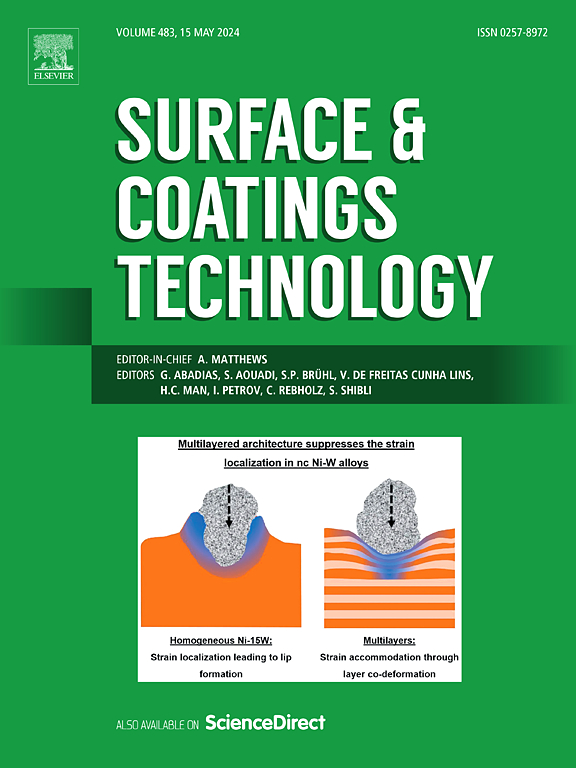Mechanism of surface hardness enhancement of aluminum alloy 2024-T3 by laser-induced plasma electrolyte jet machining
IF 5.3
2区 材料科学
Q1 MATERIALS SCIENCE, COATINGS & FILMS
引用次数: 0
Abstract
Laser-induced plasma electrolyte jet machining (LIPEJM), as an efficient machining method with low machining deformation and no environmental pollution, has potential applications in the forming machining of aerospace thin-walled components. However, the change in surface hardness after LIPEJM remains unclear. This study utilized the nanoindentation technique to directly measure unmachined aluminum alloy 2024-T3 substrates, traditional electrolyte jet machining (EJM) and LIPEJM surfaces. The results showed that the hardness of the LIPEJM surface increased by 38.29 % compared to EJM, which was related to the laser-induced thermal and force effects. The laser-induced thermal effects, observed through an increase in the surface oxide layer at a laser energy density of 122.65 J/cm2, contribute significantly to this enhancement. Additionally, a machining vibration monitoring device reveals the effects of laser-induced force during the machining process, providing insights into the underlying mechanisms. Grain refinement, induced by both thermal and mechanical impacts from the laser, is identified as the primary mechanism for surface hardness improvement. The laser-induced force exceeds the dendrite strength at high temperatures, resulting in fragmentation and increased equiaxial crystal formation sites. Furthermore, the laser-induced force effect temporarily elevates the melting point, increasing supercooling and promoting dynamic nucleation of non-uniform phases.
求助全文
约1分钟内获得全文
求助全文
来源期刊

Surface & Coatings Technology
工程技术-材料科学:膜
CiteScore
10.00
自引率
11.10%
发文量
921
审稿时长
19 days
期刊介绍:
Surface and Coatings Technology is an international archival journal publishing scientific papers on significant developments in surface and interface engineering to modify and improve the surface properties of materials for protection in demanding contact conditions or aggressive environments, or for enhanced functional performance. Contributions range from original scientific articles concerned with fundamental and applied aspects of research or direct applications of metallic, inorganic, organic and composite coatings, to invited reviews of current technology in specific areas. Papers submitted to this journal are expected to be in line with the following aspects in processes, and properties/performance:
A. Processes: Physical and chemical vapour deposition techniques, thermal and plasma spraying, surface modification by directed energy techniques such as ion, electron and laser beams, thermo-chemical treatment, wet chemical and electrochemical processes such as plating, sol-gel coating, anodization, plasma electrolytic oxidation, etc., but excluding painting.
B. Properties/performance: friction performance, wear resistance (e.g., abrasion, erosion, fretting, etc), corrosion and oxidation resistance, thermal protection, diffusion resistance, hydrophilicity/hydrophobicity, and properties relevant to smart materials behaviour and enhanced multifunctional performance for environmental, energy and medical applications, but excluding device aspects.
 求助内容:
求助内容: 应助结果提醒方式:
应助结果提醒方式:


